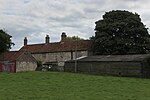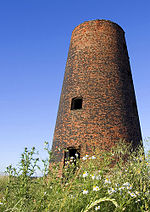Steeton, North Yorkshire
Civil parishes in North YorkshireDeserted medieval villages in North YorkshireNorth Yorkshire geography stubsSelby District

Steeton is a civil parish about 6 miles from York, in North Yorkshire, England. In 2001 the parish had a population of 27. The parish touches Appleton Roebuck, Bilbrough, Bolton Percy, Catterton, Colton, Oxton and Tadcaster.
Excerpt from the Wikipedia article Steeton, North Yorkshire (License: CC BY-SA 3.0, Authors, Images).Steeton, North Yorkshire
Geographical coordinates (GPS) Address External links Nearby Places Show on map
Geographical coordinates (GPS)
| Latitude | Longitude |
|---|---|
| N 53.892 ° | E -1.203 ° |
Address
Steeton
, Steeton
England, United Kingdom
Open on Google Maps











